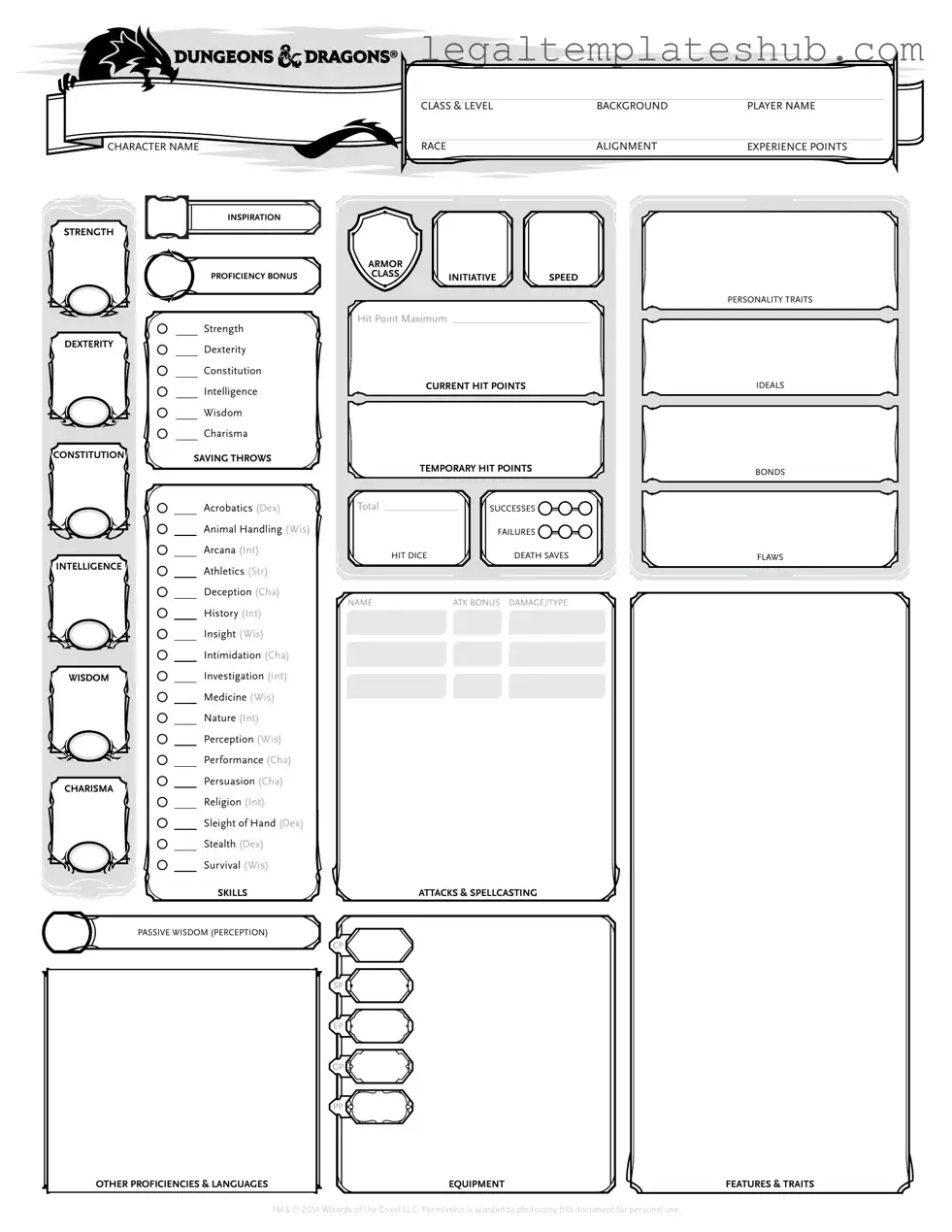Blank Dnd Character Sheet PDF Form
The Dungeons & Dragons (D&D) Character Sheet is a vital document used by players to record and manage their character's attributes, abilities, and equipment. This form serves as a comprehensive overview of a character's journey within the game, facilitating gameplay and enhancing the overall experience. To get started on your adventure, fill out the form by clicking the button below.
Access Editor
